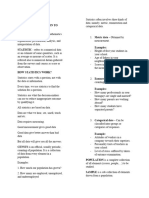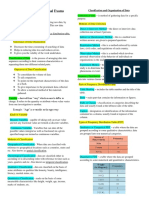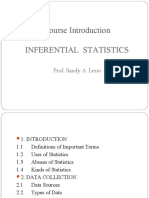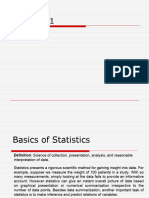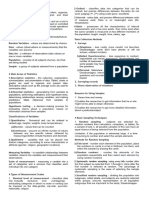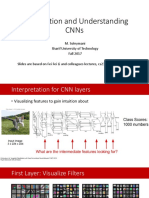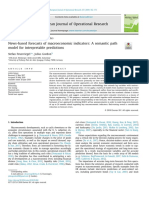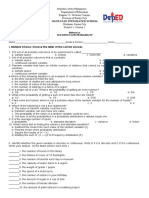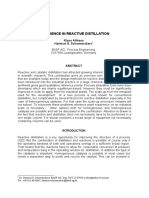0% found this document useful (0 votes)
62 views44 pagesStatistics and Probability 11 - Introduction
This document provides an overview of statistics and probability. It defines key concepts such as:
- Probability deals with predicting future events while statistics analyzes past events.
- Statistics involves collecting, analyzing, and interpreting quantitative data to aid decision making.
- Descriptive statistics describes data characteristics while inferential statistics allows predictions.
- Common data collection methods include interviews, questionnaires, experiments, and records.
- Data can be presented through text, tables, and graphs like histograms. Frequency distribution tables organize data into classes to determine frequencies.
Uploaded by
Jenna BarbacenaCopyright
© © All Rights Reserved
We take content rights seriously. If you suspect this is your content, claim it here.
Available Formats
Download as PDF, TXT or read online on Scribd
0% found this document useful (0 votes)
62 views44 pagesStatistics and Probability 11 - Introduction
This document provides an overview of statistics and probability. It defines key concepts such as:
- Probability deals with predicting future events while statistics analyzes past events.
- Statistics involves collecting, analyzing, and interpreting quantitative data to aid decision making.
- Descriptive statistics describes data characteristics while inferential statistics allows predictions.
- Common data collection methods include interviews, questionnaires, experiments, and records.
- Data can be presented through text, tables, and graphs like histograms. Frequency distribution tables organize data into classes to determine frequencies.
Uploaded by
Jenna BarbacenaCopyright
© © All Rights Reserved
We take content rights seriously. If you suspect this is your content, claim it here.
Available Formats
Download as PDF, TXT or read online on Scribd
/ 44
